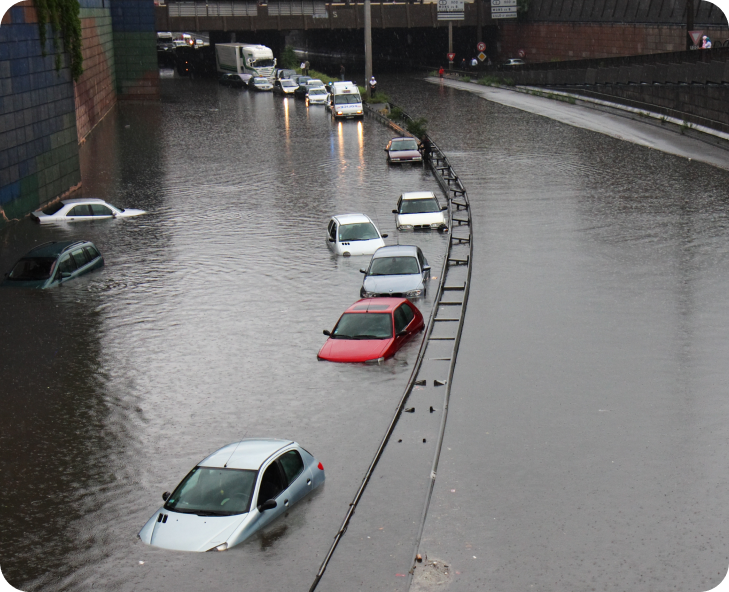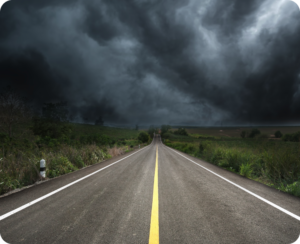Natural disasters are hard to predict, and often, there’s little time to make life-or-death decisions. Staying informed about what’s coming, even if there’s limited time to act, can give you those precious moments needed to escape danger zones or prepare to minimize damage.
Most injuries and deaths occur to uninformed or unaware people. For this reason, having multiple ways to receive weather alerts is crucial.
Learn how to prepare for a flood.
What Are Weather Alerts?
Weather alerts are warnings issued by government agencies to inform the public about dangerous weather conditions in a specific area. These alerts are issued in advance to give people time to prepare and take steps to protect themselves.
The National Weather Service (NWS) issues weather alerts in the United States using various methods, including radio, television, the Internet, and phone notifications.
Weather alerts come in three levels of severity:
- Warning: A hazardous weather event is expected soon.
- Watch: A hazardous weather event is possible.
- Emergency Warning: A hazardous weather event is happening right now.
These alerts can be issued for various weather events, including severe storms, floods, tornadoes, and earthquakes. They are a crucial tool to help people stay safe during extreme weather.
Here are a few examples of weather alerts that might be issued in the U.S.:
- Severe Storm Warning: Issued when there’s potential for hail at least 2 inches in diameter, 58 mph or higher winds, or tornadoes.
- Tornado Warning: Issued when there’s a potential for a tornado.
- Flood Warning: Issued when there’s a potential for flooding.
Check out other alerts on the NWS website.
Methods to Receive Weather Alerts
To ensure accuracy, we’ve translated the NWS document on how to receive weather alerts. Here’s what it says:
Radio and TV
Television and radio stations are a vital part of our alert system. Local TV and radio stations regularly broadcast official “Watches” and “Warnings” issued by the National Weather Service, as well as storm forecasts and tracks developed by on-air meteorologists. Television, in particular, is an excellent source of emergency information since visuals like radar and maps can describe the event in detail.
However, radio and television have significant drawbacks in terms of receiving alerts. Your radio or TV must be turned on, and you need to be able to hear or see it. You might miss the alert if they’re off or in another room. For this reason, don’t rely solely on TV or radio broadcasts as your only source of emergency alerts.
Mobile Device Emergency Notifications
Picture this: you’re driving down the road, humming to your favorite songs, when your phone in your bag suddenly makes a strange noise. Curious, you pull over at the next exit and safely check your screen. Good thing you did—your phone just alerted you about a tornado a few miles away in the same county you’re driving through.
Sound realistic? Absolutely. The U.S. wireless industry is helping to build a WeatherReady nation through a national emergency alert system called Wireless Emergency Alerts (WEA), which will notify you when dangerous weather is approaching. To learn more about WEA, visit the NWS website.
NOAA Weather Radio (NWR)
NOAA Weather Radio (NWR) is a nationwide network of radio stations that broadcast continuous weather information directly from the nearest National Weather Service office.
NWR can provide an essential source of weather alerts for those with battery-powered radios during power outages and at night while you’re asleep. For more information, visit the NWR website.
Outdoor Sirens
Outdoor sirens are designed to alert people who are outside. They are not meant to warn people in cars, homes, or other buildings. Hearing sirens indoors used to be possible, but that’s no longer the case. Energy-saving building techniques and better thermal insulation have effectively reduced sound penetration in these areas. Therefore, sirens should be treated as outdoor alerts only.
Summary
The alert system can only be effective if you understand both the benefits and limitations of the available methods. We recommend taking advantage of as many of these as possible. No warning method is perfect, and no warning system can guarantee it will never fail.
If you rely on a single method, like outdoor sirens or information solely from TV or radio meteorologists, you risk missing a warning if that system fails. Adopting a systematic approach and receiving information from multiple sources makes you much more likely to receive the warning, even if one component fails.
We highly recommend you consider the following:
- Purchase a weather alert radio if you don’t already have one.
- Trust emergency text message alerts on your phone as a critical method of receiving warnings. If you have a mobile device, you can also sign up for a call—or text-based alert system.
- Trust sirens only as an outdoor alert method. If you hear them, seek additional information immediately.
- Turn to radio or TV broadcasts for critical details and updated information.
Let’s all do our part to stay as prepared and informed as possible during the severe weather season!
Breezy’s Advice
Weather alerts are essential for keeping us safe during natural disasters and extreme weather. In addition to these alerts, you should always stay vigilant and ready to act fast in an emergency.
Here are our tips for staying prepared for any situation:
- Know the risks in your area and understand the alerts associated with them. Be ready to receive and comprehend each one.
- Create an emergency plan for your home, including a contact list, an evacuation plan, and a plan to shelter in place if needed. Share it with family and friends.
- Keep an emergency kit in your car tailored to the specific needs of your region.
- Review your auto insurance and seek coverage that protects your car from weather-related risks in your area.
- Keep a stockpile of emergency supplies at home, including food, water, first aid supplies, and other essentials.
- Ensure your home is protected against weather-related hazards.
- Review your home insurance policy and seek coverage that protects your house from the weather risks in your area.
- Always stay updated on how to receive alerts.
- Be ready to help others.
Stay safe!








